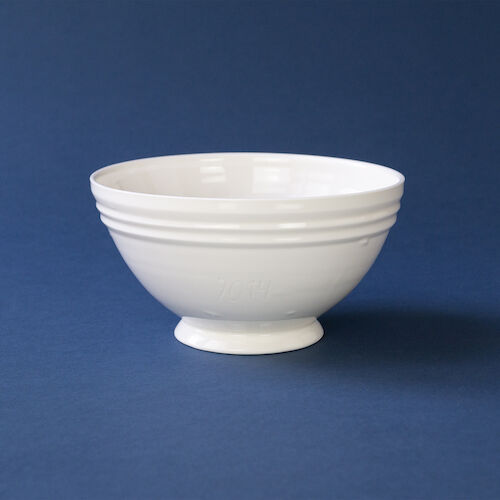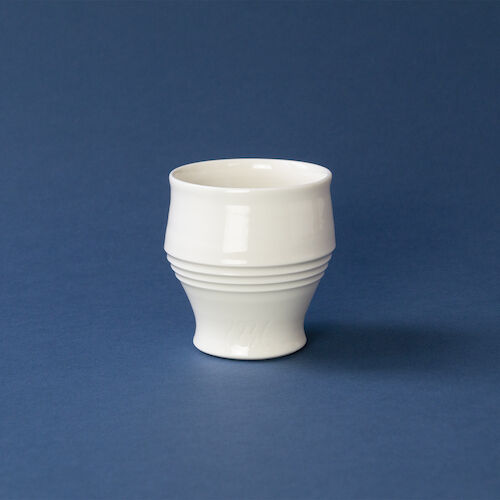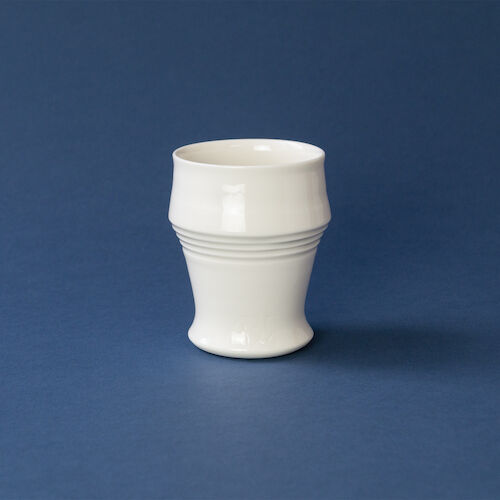Edition Albin Müller
Uli Aigner's drinking cups are a direct adoption of a design element from the original furnishings of Sanatorium Dr. Barner. It is a cup designed for the sanatorium by its architect and interior designer, Albin Müller. This design is an important evidence of the claim to conceive and realize the Sanatorium Dr. Barner with the utensils needed there as a total work of art, with the idea that the art of building and furnishing contributes significantly to recovery.
Ornament lost its reputation of being mere decoration. Instead, it was now seen as a means of expression that could, in turn, exert its own effect on the viewer. It was understood as a lifeline that preserved psychological and physical movements and could thus influence the shaping of society - an idea that received a philosophical, scientific and empathy-theoretical foundation around 1900.
Aigner took the basic shape of the cup from Albin Müller, but varied it to suit the different preferences of users. Aigner also omitted the decorative band on the top rim. The artist has created 70 different versions, which will be made available to patients for use in the sanatorium, but will also be available for purchase for further use. The project is part of a larger one: One Million, launched nine years ago, is planned as Aigner's life project, indeed as an enterprise that will extend beyond her lifetime. The artist has set herself the task of making one million vessels for a wide variety of contexts of use, be it her mother's kitchen, a hospice for the homeless, a museum, or even the Dr. Barner Sanatorium. Aigner explores the needs, preferences and habits of future users with the aim of bringing together the most diverse milieus in which the vessels circulate.
As in Art Nouveau, the artist combines new processes of creation, distribution, and reception of design work. Aigner makes no distinction between that which has long been excluded from the world of everyday use as high art and handicraft, which precisely because of its craftsmanship was not considered real art. Aigner, however, is not only concerned with the contexts of use of artistic design, but also with the pervasiveness of the techniques and technologies with which she works - this, too, is a parallel of many design works in Art Nouveau, which explored new materials and technologies, for example the possibilities of the electrification of the everyday world.
- Beate Söntgen


Item 9036
02/2024

Item 9035
02/2024

Item 9034
02/2024

Item 9027
02/2024

Item 9026
02/2024

Item 9018
02/2024

Item 9017
02/2024

Item 9016
02/2024

Item 9015
02/2024

Item 9014
02/2024

Item 9013
02/2024

Item 9012
02/2024

Item 9011
02/2024

Item 9010
02/2024

Item 9009
02/2024

Item 9008
02/2024

Item 9007
02/2024

Item 9006
02/2024

Item 8836
12/2023

Item 8835
12/2023
